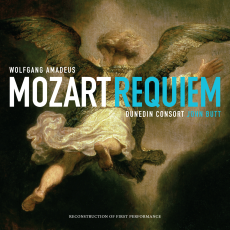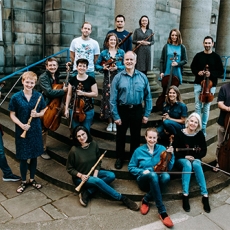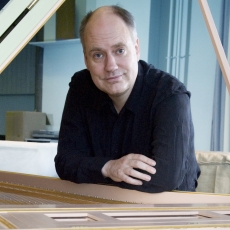Dunedin Consort - Mozart: Requiem - AllAboutJazz.com
Bruce Haynes, in his book The End of Early Music: A Period
Performer's History of Music for the Twenty-First Century (Oxford
University Press, 2007) states:
"More
than anything else, Authenticity seems to be a statement of intent. Totally
accurate historic performance is probably impossible to achieve. To know it has
been achieved is certainly impossible. But that isn't the goal. What produces
interesting results is the attempt to
be historically accurate, that is, authentic."
John
Butt, director of the Dunedin Consort, doesn't simply take these words to
heart...he takes them fully for granted. He has taken
"Historically-Informed Performance" beyond the use of period
instruments coupled with academically-rigorous period performance practice to
the point of pondering how a specific work sounded during a specific
(historically determined) performance on a specific date long ago. In his
recording of Handel's Messiah (Linn
Records, 2006), Butt endeavored to recreate the April 13, 1742 Dublin debut of
the piece under Handel's direction, making a raging flood of educated guesses
regarding the vocal and instrumental forces used coupled with existing
scholarship regarding key, time, tempi and arrangement.
Butt
has now moved beyond the realm of the Baroque into the Classical, wondering
what Mozart's Requiem sounded
like when performed at what has been thought to be its premiere December 14,
1793 at a church in Weiner Neustadt at a Mass honoring the deceased wife of
Franz Count von Walsegg (who originally commissioned the piece). However the
first performance of the Requiem in
Franz Sussmayr's completion had already been presented in Vienna as part of a
benefit concert for Mozart's widow Constanze...well, at least the first formal presentation.
After
much academic hand-waving, Butt concludes that this performance employed a
chorus of sixteen, with soloists in each of the vocal categories: soprano,
alto, tenor, bass. An added feature was that the soloists sang with the chorus
rather than separated from it. Butt believes the orchestral makeup to be
generous with six violins to a part and slightly less for the lower strings.
And so Butt proceeds to perform the Sussmayr completion of the work.
The
results are overwhelming. So great are the recording advances since the dawn of
the period instrument movement, that the warmth and grace of gut strings can
escape the original tinny sonic confines and be adequately captured spatially.
So crisp and immediate are the sonics and performance that the Requiem aeternam is
nearly terrifying. Butt captures Mozart's fully- realized gravitas in such
densely bright colors that the piece breathes with gale force. The much
fussed-over Lacrimosa is
brought to vibrant and pulsating life as is the stately Sanctus. The closing Cum Sanctis is
swirling emotion and pathos. The performance is available as a hybrid SACD and
a variety of lossless digital formats.
Butt
does not leave his speculation at the end of this superb recorded performance,
rather, he turns his consideration to what the completed parts of the piece
would have sounded like played at the composer's funeral (as several sources
have indicated) on December 10, 1791, five days following Mozart's death. He
immediately assumes that the vocal and instrumental forces would have been
considerably less, perhaps half used at the December 14, 1793 performance.
Thus, Butt makes these adjustments and presents the Requiem aeternam and Kyrie with
this reduced firepower to a more intimate and close effect. He also adds to the
program the composer's Misericordias
Domini in D minor, K. 222 (Offertorium de
tempore"), a piece Butt uses to make assumptions.
First
World exercises like this remind us that indeed we are lesser angels and as
such can only guess at the Divine. Such projects often reveal previously hidden
charms of a piece of music, charms that exist like a twilight memory, one just
out of reach of consciousness, but so close for a time that it is clearly
illuminated and understood, if for just a short time.


